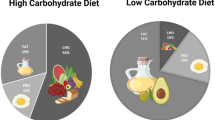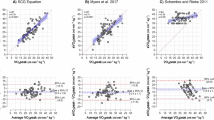Abstract
Study design: Determination of fat oxidation at three different intensities in trained wheelchair athletes on the treadmill.
Objective: The aim of the study was to assess the level and highest rate of fat oxidation in endurance-trained wheelchair athletes for recommendation on endurance training.
Setting: Institute of Sports Medicine, Swiss Paraplegic Centre, Nottwil, Switzerland.
Methods: Nine (seven men and two women) endurance-trained wheelchair athletes (VO2peak 40.2±6.7 ml/kg/min) were studied over 20 min at 55, 65 and 75% VO2peak on a treadmill in their own racing wheelchairs in order to find the exercise intensity with the highest absolute fat oxidation.
Results: As presumed, total energy expenditure for wheelchair racing was highest at 75% VO2peak, while absolute fat oxidation was statistically not significantly different at the three tested intensities. Percentage of energy expenditure from fat oxidation decreased with increasing intensity from 31.4% at 55% VO2peak to 20.9% at 75% VO2peak, while percentage from carbohydrate oxidation increased from 68.6% at 55% VO2peak to 79.1% at 75% VO2peak.
Conclusion: For wheelchair athletes, we recommend training of fat metabolism for endurance exercise at an intensity of 55% VO2peak, because absolute fat metabolism is not higher at higher intensities but less carbohydrates are used at lower intensity levels. At lower intensities, exercise can be performed over a longer time before the emptied glycogen stores will limit exercise duration. This may apply especially to paraplegic subjects whose active muscle mass is limited in contrast to able-bodied athletes.
Similar content being viewed by others
Log in or create a free account to read this content
Gain free access to this article, as well as selected content from this journal and more on nature.com
or
References
Romijn JA et al. Regulation of endogenous fat and carbohydrate metabolism in relation to exercise intensity and duration. Am J Physiol 1993; 265: E380–E391.
Sidossis LS, Gastaldelli A, Klein S, Wolfe RR . Regulation of plasma fatty acid oxidation during low- and high-intensity exercise. Am J Physiol 1997; 272: E1065–E1070.
Astorino TA . Is the ventilatory threshold coincident with maximal fat oxidation during submaximal exercise in women? J Sports Med Phys Fitness 2000; 40: 209–216.
Romijn JA, Coyle EF, Sidossis LS, Rosenblatt J, Wolfe RR . Substrate metabolism during different exercise intensities in endurance-trained women. J Appl Physiol 2000; 88: 1707–1714.
Van Loon JJC, Greenhaff PL, Constantin-Teodosiu D, Saris WHM, Wagenmakers AJM . The effects of increasing exercise intensity on muscle fuel utilisation in humans. J Physiol 2001; 536: 295–304.
Achten J, Gleeson M, Jeukendrup AE . Determination of the exercise intensity that elicits maximal fat oxidation. Med Sci Sports Exerc 2002; 34: 92–97.
Schmid A . Rollstuhlergometrie. Dtsch Z Sportmed 2002; 53: 153–154.
Kjaer M et al. Fatty acid kinetics and carbohydrate metabolism during electrical exercise in spinal cord-injured humans. Am J Physiol 2001; 281: R1492–R1498.
Cowell LL, Squires WG, Raven PB . Benefits of aerobic exercise for the paraplegic: a brief review. Med Sci Sports Exerc 1986; 18: 501–508.
Hoffmann MD . Cardiorespiratory fitness and training in quadriplegics and paraplegics. Sports Med 1986; 3: 312–330.
Huonker M, Schmid A, König D, Mrosek P, Keul J . Trainingsinduzierte Adaptation des Herz-Kreislauf-Systems bei querschnittgelähmten Rollstuhlfahrern. Schweiz Z Sportmed Sporttrauma 1996; 44: 19–23.
Gass GC, Camp EM, Davis HA, Eager D, Grout L . The effects of prolonged exercise on spinally injured subjects. Med Sci Sports Exerc 1981; 13: 277–283.
Frayn KN . Calculation of substrate oxidation rates in vivo from gaseous exchange. J Appl Physiol 1983; 55: 628–634.
Atwater WO . Coefficients of digestibility and availability of the nutrients of food. Proc Am Physiol Soc 1909; 30: 14–19.
Coyle EF . Substrate utilisation during exercise in active people. Am J Clin Nutr 1995; 61(Suppl) S968–S979.
Pirnay F, Scheen AJ, Gautier JF, Lacroix M, Mosora F, Lefebvre P . Exogenous glucose oxidation during exercise in relation to the power output. Int J Sports Med 1995; 16: 456–460.
Brechtel K et al. Utilisation of intramyocellular lipids (IMCLs) during exercise as assessed by proton magnetic resonance spectroscopy (1H-MRS). Horm Metab Res 2001; 33: 63–66.
Trudeau F, Bernier I, De Glisezinsky F, Crampes F, Dulac F, Riviere D . Lack of antilipolytic effect of lactate in subcutaneous abdominal adipose tissue during exercise. J Appl Physiol 1999; 86: 1800–1804.
Kanaley JA, Mottram CD, Scanlon PD, Jensen MD . Fatty acid kinetic responses to running above or below lactate threshold. J Appl Physiol 1995; 79: 439–447.
Essen-Gustavsson B, Henriksson J . Enzyme levels in pools of microdissected human muscle fibres of identified type. Adaptive response to exercise. Acta Physiol Scand 1984; 120: 505–515.
Bishop D, Jenkins DG, McEniery M, Carey MF . Relationship between plasma lactate parameters and muscle characteristics in female cyclists. Med Sci Sports Exerc 2000; 32: 1088–1093.
Schantz P, Sjoberg B, Wideck AM, Ekblom B . Skeletal muscle of trained and untrained paraplegics and tetraplegics. Acta Physiol Scand 1997; 161: 31–39.
Author information
Authors and Affiliations
Rights and permissions
About this article
Cite this article
Knechtle, B., Müller, G., Willmann, F. et al. Fat oxidation at different intensities in wheelchair racing. Spinal Cord 42, 24–28 (2004). https://doi.org/10.1038/sj.sc.3101548
Published:
Issue date:
DOI: https://doi.org/10.1038/sj.sc.3101548
Keywords
This article is cited by
-
Physiological responses during a 25-km time trial in elite wheelchair racing athletes
Spinal Cord Series and Cases (2018)
-
Effect of pre-exercise carbohydrate ingestion on substrate consumption in persons with spinal cord injury
Spinal Cord (2009)
-
Substrate metabolism during exercise in the spinal cord injured
European Journal of Applied Physiology (2009)
-
Optimal exercise intensities for fat metabolism in handbike cycling and cycling
Spinal Cord (2004)



